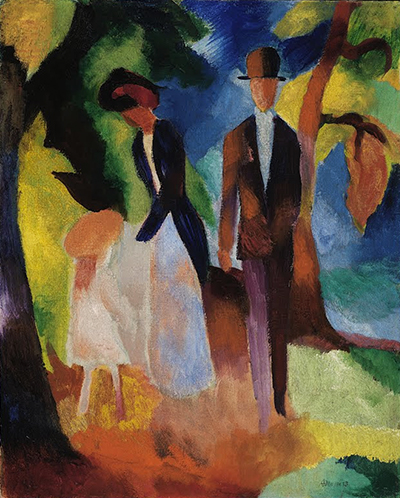People by the Blue Lake is typical of Macke's career, with a young couple and child portrayed whilst walking through a local forest. The scene was captured by the artist in 1913.
This painting can be found at the Staatliche Kunsthalle Karlsruhe in Germany, and most of his original artworks remain in his native country. A blue sky can be found in the far background, whilst the family are surrounded by trees. All detail is kept to a minimum and the artist leaves us to use our imagination to fill in some of the blanks. Macke was happily moving towards a greater level of abstraction with each year that passed as he entered the last few years of his career, not that he would have been aware of this fact at the time. WWI was to take his life, and another artist in their prime was, sadly, lost to the world.
Macke was producing uplifting paintings at a time when Europe was on the verge of war. It would, of course, take his own life eventually. Perhaps he was seeking to remind us all of the beauty of nature and humanity, hoping that conflict could be averted. Famous artists have often been against war, such as with Picasso's Guernica which told of the horror of the Spanish Civil War and the punishment delivered by Franco against anyone that stood in his way.
Those looking to see this painting in person at the Staatliche Kunsthalle Karlsruhe should check ahead to make sure that it is out on display, as the artist's work is often loaned out for exhibitions elsewhere in his native Germany and also elsewhere in Europe. The gallery itself also owns a number of other notable paintings including famous works by the likes of Matthias Grünewald, Albrecht Dürer, Lucas Cranach the Elder, Rembrandt, Pieter de Hooch, Peter Paul Rubens, Ernst Ludwig Kirchner and Juan Gris. The overall collection is, frankly, astounding and makes this museum one of the most impressive in all of Germany and is an excellent way of getting an understanding of the contribution to art history that this nation has made, including the Renaissance and also Expressionism.




